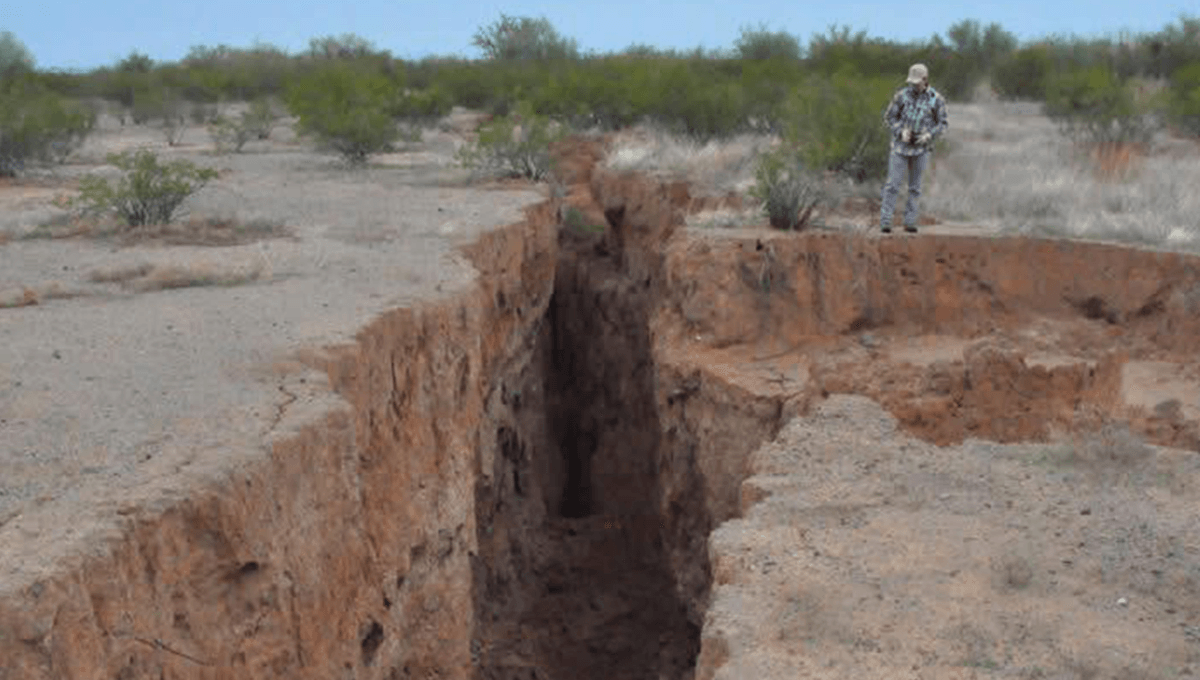
Giant fissures have been appearing in the ground across the southwest US. In southcentral Arizona alone, 272 kilometers (169 miles) of these cracks have been mapped, while they have also appeared in Utah, California and Texas.
The cracks are not natural formations, according to Joseph Cook of the Arizona Geological Survey, who told Insider that “it’s something we’ve caused to form”. Subsidence, where the ground is displaced, is generally the result of humans trying to get water out of the ground, causing it to compress and become unstable.
“More than 80 percent of known land subsidence in the U.S. is a consequence of groundwater use, and is an often overlooked environmental consequence of our land and water-use practices,” the US Geological Survey explains on their website, adding “increasing land development threatens to exacerbate existing land-subsidence problems and initiate new ones.”
Fissures occur where softer ground collapses, but nearby ground does not. Like their evil cousin the sinkhole, they can open up pretty quickly,
A recent New York Times investigation into groundwater use and the appearance of these fissures highlighted another problem; groundwater is being depleted faster than it naturally fills up.
“Most of the water we’re pulling out of the ground is thousands of years old,” Jason Groth, Charles County Maryland’s deputy director of planning and growth management told the New York Times. “It’s not like it rains on Monday, and by Saturday it’s in the aquifer.”
Within a decade, he believes the county may run out of water. With increasing temperatures and drought, the amount of groundwater we collect may compensate for the loss of rainwater (e.g. in farming) but it may be a temporary fix.
“From an objective standpoint, this is a crisis,” law professor and water expert at the University of Tulsa Warigia Bowman told the New York Times. “There will be parts of the U.S. that run out of drinking water.”
[H/T: New York Times]
Source Link: "It's Something We've Caused": Giant Fissures Are Opening Up In The US